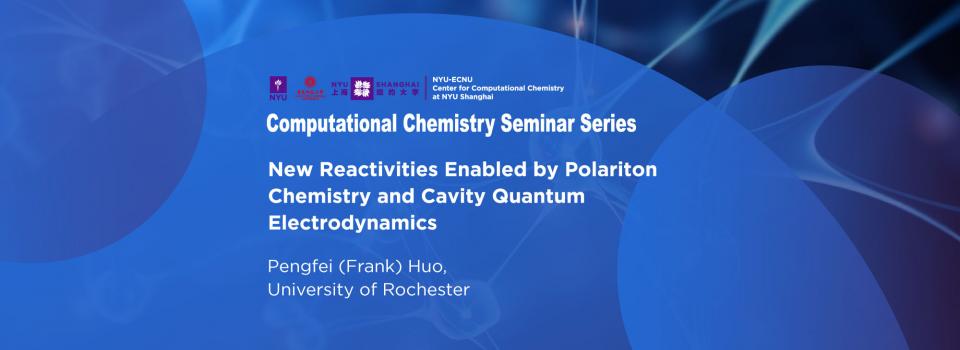
Abstract
The quantum light-matter interactions between the molecule and the quantized radiation mode inside an optical cavity create a set of hybridized electronic-photonic states, so-called polaritons, opening up new possibilities to control chemical reactions by exploiting intrinsic quantum behaviors of light-matter interactions.
In this talk, I will present our recent investigations on new chemical reactivities enabled by cavity quantum electrodynamics and demonstrate detailed mechanisms of how quantized light-matter interactions can change the outcomes of chemical reactions.
First, we demonstrate that the selectivity of a model photo-isomerization reaction can be controlled by tuning the photon frequency of the cavity mode, providing new ways to manipulate chemical reactions via light-matter interaction. We further investigate collective quantum effects enabled by coupling quantized radiation mode to multiple molecules.
Second, I will discuss our recent work on using quantum dynamics simulations to investigate the polariton photophysics of CdSe nanoplatelet (NPL) excitonpolaritons in a distributed Bragg reflector (DBR) cavity. Our numerical simulations of the angle-resolved photoluminescence (PL) agree extremely well with the experimental data, providing a fundamental explanation of the asymmetric intensity distribution of the upper and lower polariton branches. Our results also provide mechanistic insights into the importance of phonon-assisted nonadiabatic transitions among polariton states, which are reflected in the various features of the PL spectra.
Finally, I will present a theoretical explanation of the cavity modification of the ground state reactivity in the vibrational strong coupling (VSC) regime in polariton chemistry. Our theoretical results suggest that the VSC kinetics modification is originated from the non-Markovian dynamics of the cavity radiation mode that couples to the molecule, leading to the dynamical caging effect of the reaction coordinate and the suppression of reaction rate constant for a specific range of photon frequency close to the barrier frequency.
Biography
Frank received his B.S. in chemistry from Lanzhou University of China in 2007. He then moved to Boston University to pursue his Ph.D. in theoretical chemistry with David Coker. Frank’s Ph.D. work focused on developing efficient and accurate non-adiabatic dynamics methods to understand the excitation energy transfer process and the electronic coherence in natural light harvesting systems. In 2012 he joined CalTech as a postdoctoral researcher in the group of Tom Miller where he worked on electron and excitation transfer dynamics, as well as applying ab-initio molecular dynamics tools and wavefunction-in-DFT embedding approach to explore electron and proton transfer mechanisms in catalysts.
Since joining Rochester, his group develops new theoretical approaches to investigate chemical reactivities when they are enabled by intrinsically quantum mechanical behavior. Frank received several national awards, including the National Science Foundation CAREER award (2018), Cottrell Scholar award from Research Corporation for Science Advancement (2020), J. Phys. Chem. Young Scientist (2019) and OpenEye Outstanding Junior Faculty Award in Computational Chemistry from ACS (2020), and Hirschfelder Visiting Scholar from UW Madison (2023).
Seminar Series by the NYU-ECNU Center for Computational Chemistry at NYU Shanghai


